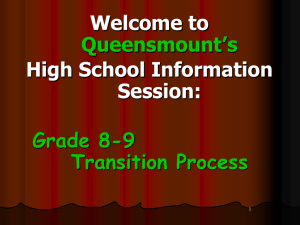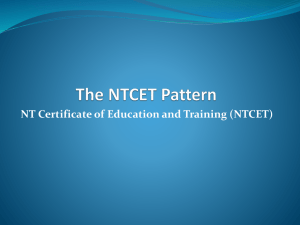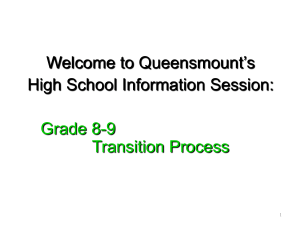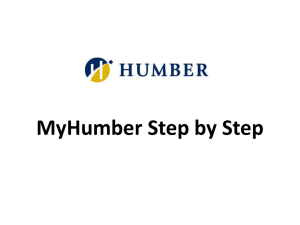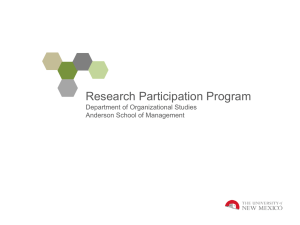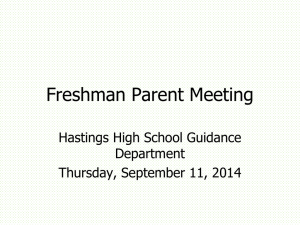Acc Waikato ws - SecondarySocialScience
advertisement
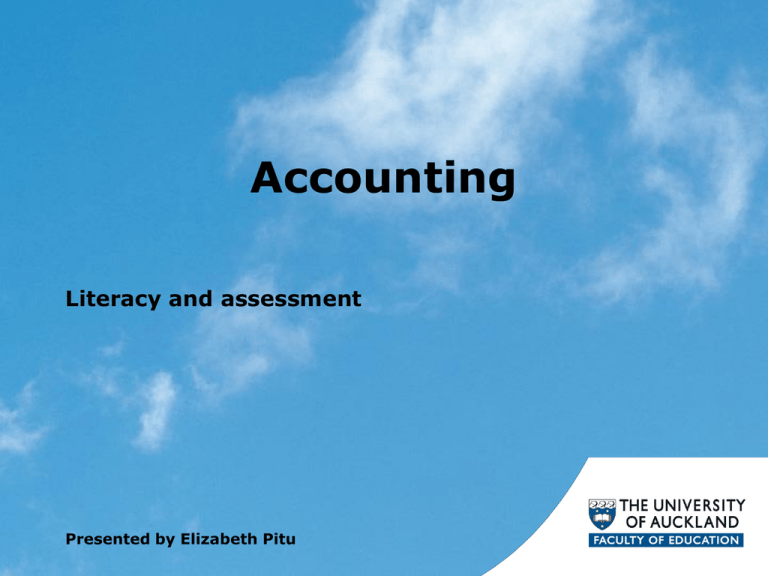
Accounting Literacy and assessment Presented by Elizabeth Pitu Introduction and Burning issues • Please introduce yourself • Please let us know any burning issues for today Accounting matrix Conceptual AS90976 Concepts 1.1 3 credits X AS91174 Concepts. 2.1 Processing Reporting Interpretation Decision-making Systems AS90977 1.2 Processing cash. AS90980 1.5 Interpretation 5 credits I AS90978 1.3 Financial statements 5 credits X AS90981 1.6 Individual/group decision. 3 credits I AS90982 1.7 Cash management 4 credits I AS91175 Processing software. AS90979 1.4 Community organisations 4 credits I AS91176 2.3 Financial statements AS91481 2.5 Topical issue decision making AS91179 Accounts receivable. 3 credits I 2.2 4 credits X AS91177 2.4 Interpretation 4 credits X 4 credits I AS91404 3.1 Reporting entity concepts 4 credits X 4 credits X AS91405 3.2 Partnerships 4 credits I 5 credits X AS91406 3.3 Company financial statements. 5 credits X 2.6 4 credits I AS91407 3.4 Annual report 5 credits I AS91408 3.5 Management accounting 4 credits X AS91386 2.7 Inventory. 3 credits I AS91409 3.6 Job costing 4 credits I What’s all this about literacy? • The majority of accounting achievement standards contribute to the NCEA literacy requirement. • That’s all Level 1 except processing and reporting. • At Level 2 and 3 the processing and reporting standards get the nod for numeracy. • Remaining Level 2 and 3 achievement standards contribute to the NCEA literacy requirement. Then there’s university entrance • From 2014 AS 91407 is the winner here • Success in the annual report standard provides students with 5 credits in writing so they don’t need another standard • Alternatively it can contribute to 5 credits in reading if students have writing and not reading credits • AS 91404 also contributes to reading, but this is external and 4 credits Literacy and language demands • Language is fundamental to thinking and learning. • Reading, writing, speaking, listening, viewing/visual skills and the skills required to communicate information in a range of subject-specific forms, can be thought of as an interactive tool set or kete students need to acquire. Literacy is a shared responsibility • All teaching and learning activities use language. • To understand language students need to be literate. • This requires all teachers to be teachers of language and literacy. Sharing the love • One challenge for us is that we often think literacy and language is implicit. • To succeed students require explicit teaching of both content and literacy; language and language knowledge and skills in each learning area. Content, language and literacy are intertwined. • What deliberate acts can you undertake? Where should literacy start? • Like a,b,c and do rei me at the very beginning • Actively engage students in literacy tasks • Consider how many income statements and balance sheets your students do in a level 1, or even level 2 or 3 year? • How many treasurer’s reports did they write before the assessment? • How many paragraphs did they write before they sat concepts or interpretation externals? Have your students own the learning • • • • Let them write anything they want Give them a question to write a response to. Guardian of the word Let them chose the business they will write their concepts about Have your students own the learning • • • • Conversations can be equally important 1 to 2 to 4 to … Use a 1-10 quick quiz regularly Repeat, repeat, repeat – be like a stuck record! Model Excellence – Accounting In Accounting (Level 2 and 3): • Achievement – describe and apply • Merit – apply and explain • Excellence – explain and justify Try WHs – what, who, where, how, why, why and why again The final why is going forward/consequences – so what? Providing a structure for evidence • While Excellence students might be able to provide Excellence evidence without assistance, other students may need graphic organisers, writing frames or other structures around which to provide evidence • Students need to know what they have to do, why they have to do that, and how they will know they have been successful • Don’t be afraid to differentiate Concepts and context • Highlight the business (and the owner L1&2) • Write a sentence about what the business does • Make sure answers relate specifically to what the business does Concepts questions • Highlight the concept and the context of the question eg – – – – Concept = historical cost and asset = buildings Concept = asset and asset = shop fittings Concept = accrual basis and expense = wages Concept = comparability and policy refers to consistency • Include and both the concept and the context in relation to the business (owner) in your answer Writing in context of the business Business Hallenstein Glassons Question is why shop fittings is an asset • Shop fittings is an asset of Hallenstein Glassons because • What: the shop fittings display clothes in an attractive way • Why: so customers will buy the clothes • How: which brings in income and cash increasing the asset bank and equity through more profit Writing in context of the business Adding recognition criteria… • It is probable all the Hallenstein Glassons (HG) stores will continue to use the shop fittings to display clothes in the future • There is a reliable measure of the shop fittings from a transaction document (invoice) detailing the price paid (historical cost) • Therefore shop fittings are reported as an asset in HG’s Statement of Financial Position Decision making standard • This standard is little changed from the previous 3.6 • Two key additions: • A CVP profit statement • Comparison of actual results with budgets What internal evidence? • Check the conditions of assessment – go past individual writing – can students present evidence orally? in groups? Accounting examples • Level 1 detailed explain for analysis and interpretation • Treasurer’s report brain storm • Level 2 Accounts Receivable • (Chiefs) Rugby Ball analogy • Level 3 internals Brain storm – class or group Treasurer’s report • Divide the board/large piece of newsprint in half • Students contribute financial and non-financial information • Draw arrows to show the links • Keep asking why? • Why for the future of the club? • Students can then write up their own report Reflection • How might I apply this in my teaching? • How might I contextualise this for my students? Thank you • Please complete your evaluation before you leave this afternoon. • I trust you have learned something.

